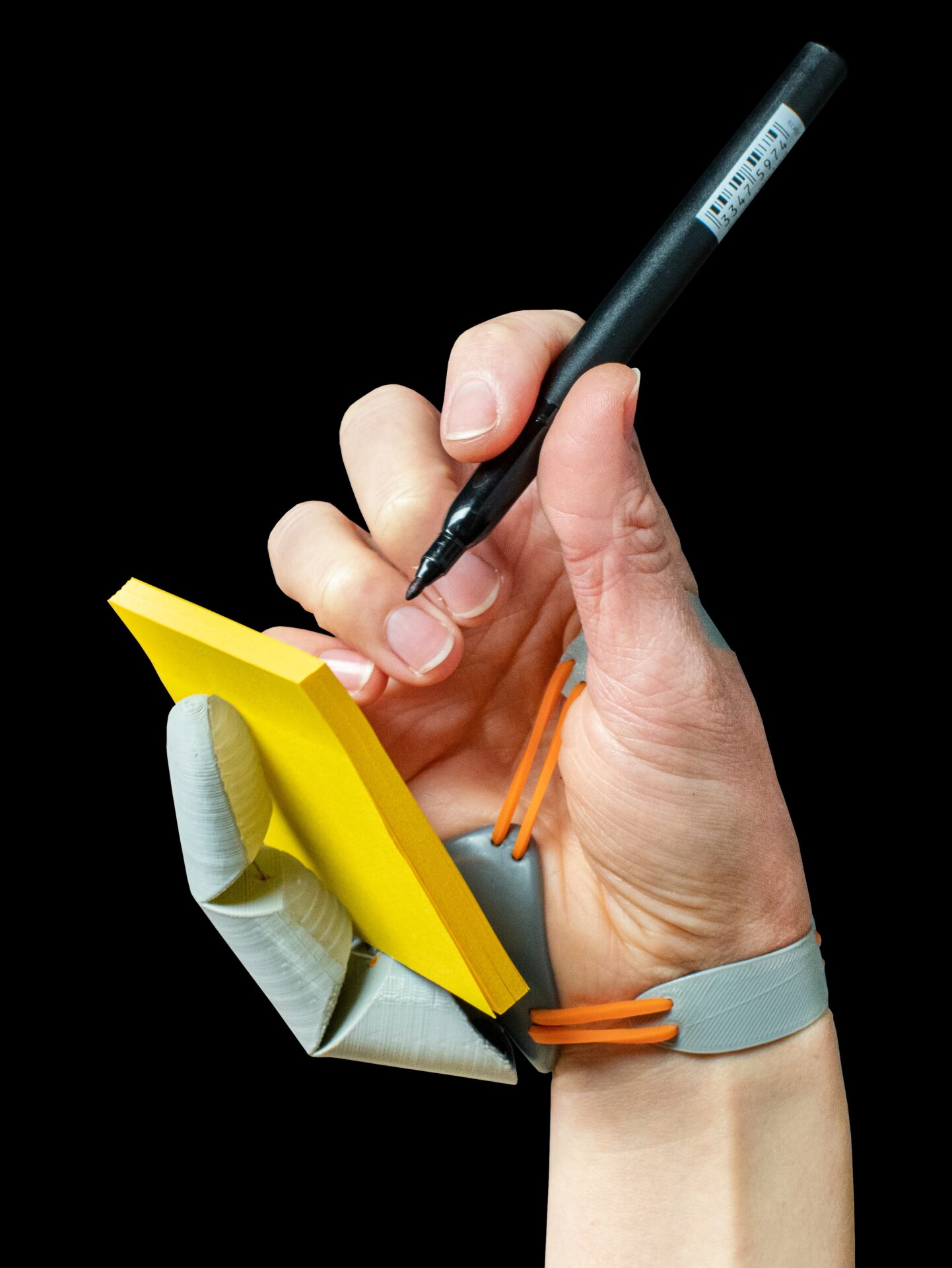We are witnessing the rise of novel augmentation technologies designed to extend the physical abilities of able-bodied individuals. However, whilst engineers are developing extra fingers and even entire arms aimed to augment our own, relatively little attention has been afforded to how the human brain will control them. Is it possible, from a sensorimotor perspective, to develop sensory and motor skill to control a new body part? Here, I will describe a series of studies that aimed to begin addressing these questions, where individuals were trained to use a toe-controlled extra robotic finger (the Third Thumb; Dani Clode Design), both in the lab and ‘in the wild’. Our studies demonstrate that successful integration of a motor augmentation device can be readily achieved, with potential for flexible use, reduced cognitive reliance and increased sense of embodiment. To support this motor skill learning, participants will rely on a multitude of sensory cues arising both from the Third Thumb and from their own body. Importantly, we show that developing motor skill with the extra Thumb resulted in changed use and representation of the biological hand. Collectively these results demonstrate neurocognitive bottlenecks and opportunities for the successful realisation of robotic motor augmentation, with implications for related assistive technologies.
Neurophysiological Bases of Human Movement (King's College London, UK) (2023) Proc Physiol Soc 55, SA01
Research Symposium: Developing motor skill with a new body part
Tamar Makin1,
1University of Cambridge Cambridge United Kingdom,
View other abstracts by:
Where applicable, experiments conform with Society ethical requirements.

